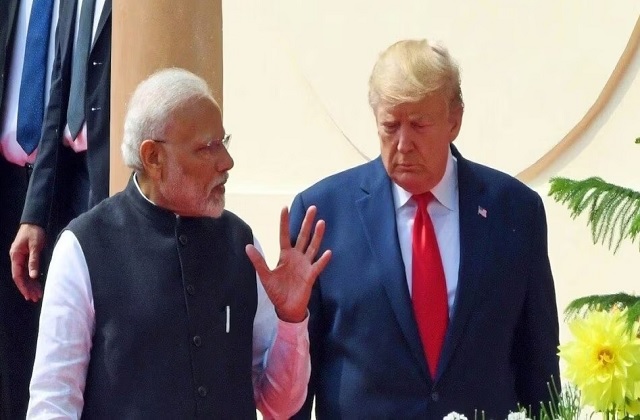America had announced to impose 25% tariff on many countries including India. This tariff was supposed to be implemented from 1 August 2025, but now it has been postponed by 1 week. That is, now this tariff will be applicable from 7 August 2025. This decision of the US has created a stir in the global business world. US President Donald Trump suddenly announced this tariff on Wednesday, which includes countries like India, Bangladesh and Brazil. Trump made it clear that this step was taken as a way to remove trade barriers and punish transactions involving Russia.

India’s response: every step in the interest of the country
The Indian government has so far given a restrained response to the issue. Union Minister Piyush Goyal clearly stated in the Lok Sabha that India will not come under the pressure of any country and all possible actions will be taken in the interest of the country. According to government sources, India is ready to negotiate with America on this issue and the answer to the tariff will be given at the negotiation table. India’s stance is clear that the interests of 70 crore farmers and 140 crore citizens will be given priority in any decision.
What does America want?
The US is constantly pressuring India to open up its agricultural and dairy sectors to US products. In particular, the US wants India to allow non-veg milk (milk from cattle that eat carnivorous fodder) and genetically modified (GM) crops in the country. The Trump administration demands that India pay zero or minimum tariffs on these US products. In return, he is ready to give some trade concessions.
Why is India not accepting the American conditions?
India has made it clear that it will not open up its agriculture and dairy sector to any foreign pressure, especially US pressure. There are many concrete and culturally significant reasons behind this. In India, milk is not only a source of nutrition but it is religiously and culturally considered sacred. In such a case, the Indian society does not accept milk obtained from non-veg fodder-eating cattle because it is against the social sentiments of the country. Besides, India does not want to compromise its food security, strategic autonomy and interests of farmers. The government clearly believes that any trade agreement between India and the US will be acceptable only if it is balanced and protects the interests of both countries equally.
Why avoid the 25% tariff decision?
Although the Trump government had announced the tariff, but the new notification of America said that this tariff is being postponed for a week. That is, now this tariff will be effective from 7 August 2025. This decision is considered to be the result of backdoor diplomacy and global pressure. During this one-week respite, both countries can sit at the negotiating table and reach a balanced solution.
India’s strategy: not in response, trust in balance
The Indian government does not want to take any direct retaliatory action on the tariffs at the moment. The government’s strategy is to resolve this issue through talks with the US and if necessary, international forums like the WTO (World Trade Organization) can also be resorted to. India also wants Indian products to have better access to the US market. Especially for pharma, textile and IT sector.
What will be the impact of tariffs?
If the 25 percent tariff is imposed by the US from August 7, it may affect many of India’s major export sectors. Especially the cost of textile and garment sector will increase which may make it difficult to compete in the global market. In addition, demand for products from industries such as steel and aluminum could decline in the US as tariffs would raise their prices, causing US companies to turn to other options. This will also increase the pressure on India’s small and medium exporters who have already limited resources to survive in the global market. However, India has options to deal with it. The government can work on measures such as strengthening trade partnerships with other countries, intensifying lobbying in the US and making the quality of domestic products in line with international standards so as to compensate for potential losses on exports.